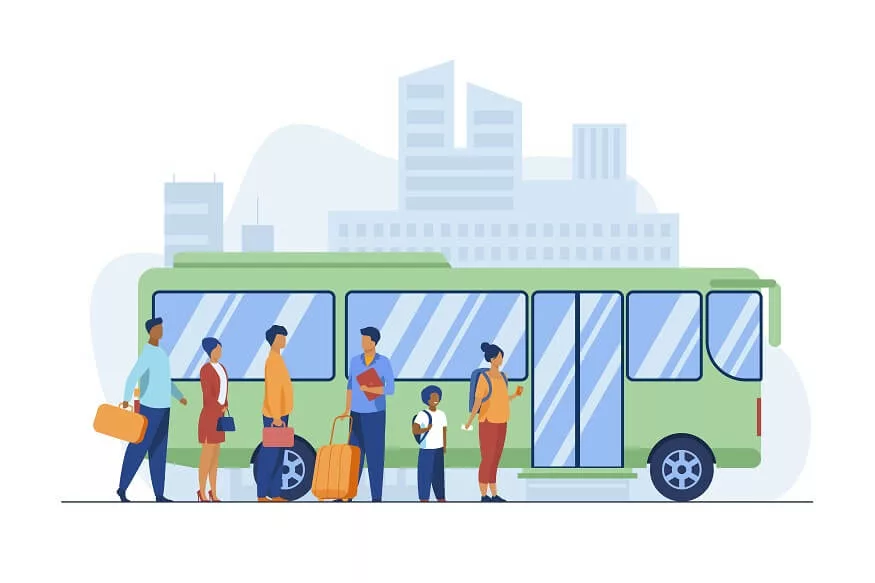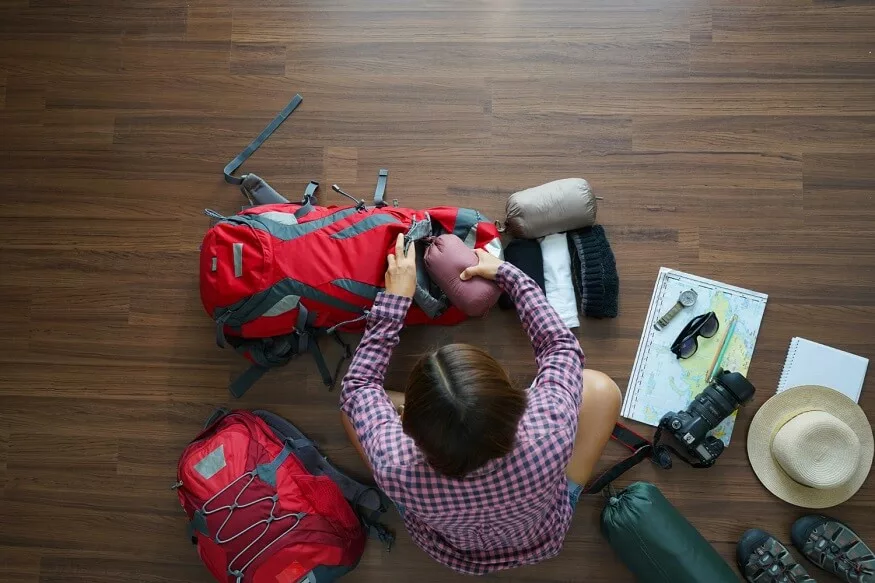The realm of public transportation stands as an inseparable facet of contemporary urban existence, effectively serving as a vital artery for innumerable individuals embarking upon their daily sojourns. Be it the early morning embarkation upon the school bus, the routine pilgrimage through the rail networks to reach one’s workplace, or the subterranean exploration of the metropolis aboard a subway system, these transit conduits constitute the very lifeblood of the bustling urban landscape. It is within the context of these indispensable transit systems that we find the need to delve deeply into the pivotal role played by decorous behaviour and genteel manners. These, we shall dissect and expound upon at length, for they are the linchpin not only to ensuring a secure passage but also to bestowing a congenial journey upon all co-travelers. In this discourse, we shall embark upon a comprehensive odyssey, traversing the nuanced landscape of conduct and courtesy, with a pronounced focus on the triad of vehicular mobility –school buses, trains, and subways.
Understanding Behaviour in the Context of Public Transportation
Behaviour on public transportation entails the conduct and demeanour exhibited by passengers during their transit experiences. Demonstrating good behaviour contributes substantially to a comfortable and secure journey for everyone, while inappropriate behaviour can lead to disruptions and potential safety hazards. Below, we will delve deeper into the specifics of appropriate behaviour across various modes of public transportation.
School Buses: Setting the Example for Young Passengers
For many students, school buses represent their initial exposure to public transportation. Instilling a sense of proper behaviour on school buses is paramount, not just for their personal safety but also for the overall welfare of the bus driver and fellow passengers.
- Boarding and Exiting Prowess: Exemplary behaviour is exemplified when students embark on and disembark from the bus in a well-organised manner. Pushing, shoving, or reckless running can result in accidents. Exercise patience and wait for the bus to come to a complete stop before making any movements.
- Manners in Seating Arrangements: Manners take centre stage when it comes to seating etiquette. Extending courtesy to younger students, individuals with disabilities, or expectant passengers by offering seats is essential. Discourage seat saving or sprawling across multiple seats to uphold fairness.
- Exercising Quietude and Respectfulness: While a school bus can be a bustling environment, excessive noise levels and unruly behaviour can prove distracting to the driver and create an unsafe atmosphere. Encourage students to maintain a reasonable volume and show respect to fellow passengers.
- Adherence to Instructions: School bus drivers bear the responsibility of ensuring passenger safety. It is imperative that students promptly adhere to their instructions. Compliance includes remaining seated while the bus is in motion and utilising seatbelts when available.
Also read: 10 Safety Rules at School You Must Teach Your Children
Trains: The Art of Maintaining Order
Trains serve as a convenient mode of public transportation for countless daily commuters. Nevertheless, overcrowding and a lack of consideration for fellow passengers can transform train rides into less-than-pleasant experiences and even compromise safety.
- Boarding Etiquette: Displaying etiquette during boarding involves allowing passengers to exit before embarking on the train. Stand clear of the doors to facilitate seamless entry and exit without congestion, reducing the risk of accidents.
- Respect for Reserved Seating: Many trains designate seats for specific groups such as seniors, expectant women, and individuals with disabilities. Always honour these designations and be ready to yield your seat if necessary.
- Noise Management: Mind your surroundings by engaging in conversations at a reasonable volume, particularly during peak hours when trains tend to be crowded. Employ headphones when enjoying music or videos to avoid disrupting fellow passengers.
- Personal Space Awareness: While trains may become quite crowded, it is imperative to be considerate of personal space. Avoid pushing, shoving, or unnecessarily encroaching on others’ personal boundaries.
Subways: Unveiling the Underground Journey
Subways are a common mode of transportation in major cities worldwide, offering swift and efficient travel. Navigating these subterranean systems can be an adventure, but proper behaviour and manners play an integral role in fostering a pleasant and secure experience.
- Platform Safety Measures: While awaiting the subway, maintain a safe distance behind the platform’s safety line. Refrain from leaning over the edge or engaging in risky behaviour, as trains can approach swiftly, potentially leading to accidents.
- Queue Formation: In a display of manners and orderliness, form queues while waiting to board a bus, train, or subway. This practice demonstrates respect for others’ time and personal space, minimising the likelihood of pushing, shoving, or chaos during boarding.
- Managing Emergency Situations: In the event of an emergency, it is crucial to remain composed and follow instructions provided by subway staff. Hasty actions, such as pushing and panicking, can exacerbate the situation and place passengers at risk.
- Litter Abatement and Prevention of Vandalism: Upholding cleanliness within subway cars involves the responsible disposal of trash and the refraining from vandalising public property. A clean and orderly environment fosters safety and enhances the overall quality of the journey for all passengers.
Also read: 7 Important Life Lessons Kids Should Learn
The Profound Significance of Manners in Public Transportation Safety
In addition to behaviour, the role of manners in public transportation safety should not be underestimated. Manners encapsulate polite and considerate behaviour that enhances the commuting experience for everyone involved.
- Seat Offerings as a Polite Gesture: Offering your seat to someone in need, such as an elderly person, expectant mother, or someone with a disability, constitutes one of the most significant manifestations of manners on public transportation. This courteous act ensures their comfort and safety throughout the journey.
- Queuing Etiquette: The formation of orderly queues while waiting to board public transportation showcases respect for others’ time and personal space. This practice alleviates the chances of pushing, shoving, and confusion during boarding, facilitating a smoother and safer process.
- Respecting Personal Space: Manners encompass an awareness of personal space, avoiding encroachment upon others’ boundaries or physical discomfort.
- Considerate Conversations: When engaged in conversations on public transportation, exercise mindfulness regarding volume levels. Boisterous or intrusive conversations can disrupt fellow passengers and, potentially, divert the operator’s attention, posing safety concerns.
Also read: The Role of Ethics and Values Education in Schools
Conclusion – Ensuring Public Transportation Safety for All
The significance of appropriate behaviour and manners on school buses, trains, and subways cannot be overstated. Whether you are a student embarking on a school bus journey or a seasoned commuter navigating the bustling subway, your actions bear significant implications for the safety and overall experience of fellow passengers.
By incorporating these principles of behaviour and manners into our daily commuting routines, we not only bolster safety but also foster a sense of community and consideration among passengers. Public transportation serves as a shared space, and our collective behaviour and manners contribute to the quality of the shared journey.
Incorporating these behaviours and manners into our daily commutes ensures safety, enhances the overall journey quality, and fosters a sense of community and consideration among passengers. Together, let us make every public transportation journey safe, pleasant, and characterised by courteous interactions.
The EuroSchool initiative is at the forefront of promoting public transportation safety by educating students about appropriate behaviour and conduct on school buses, trains, and subways. Recognising the vital role public transportation plays in the lives of millions across Europe, EuroSchool emphasises the importance of setting a positive example from a young age. Through engaging programs and informative resources, EuroSchool aims to instil good manners and safe practices in students who utilise these modes of transit, ensuring not only their own safety but also contributing to a harmonious and secure environment for all passengers. By integrating these crucial lessons into the educational curriculum, EuroSchool is shaping responsible and considerate future commuters who will contribute to a safer and more pleasant public transportation experience for everyone.










